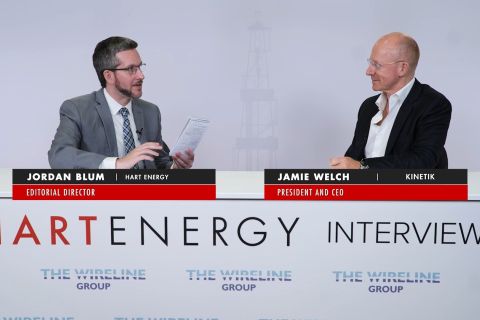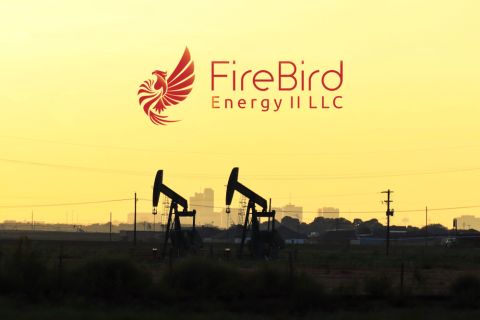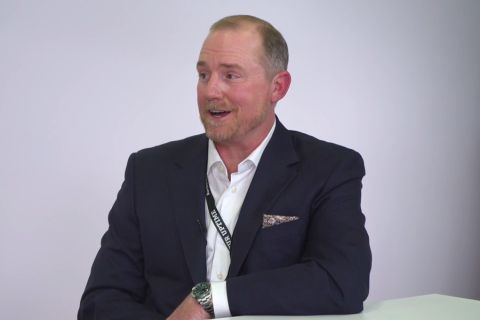The hoopla about the Jack well in the deepwater Gulf of Mexico's Lower Tertiary trend, and the first flow of crude oil through the Baku-Tbilisi-Ceyhan (BTC) Pipeline, are signposts of how time-consuming and difficult major oil and gas projects can be.
You have to be able to ride through the commodity price and geopolitical cycles. It took patience to bring these world-class projects to fruition.
But that's a commodity in short supply in this hurry-up world where we race to meet this quarter's bottom line. We wait impatiently for a fast response to our last email. From a continent away, news photos arrive on our desk top 10 minutes after an event happens, whether it's important or not. We are losing sight of how patience is required in life, in the oil and gas business, for investing, and certainly in the matter of geopolitics.
So, commodity prices have fallen significantly. Natural gas just closed at a two-and-a-half year low, a hedge fund implodes on a wrong-way gas-price bet, and equity investors are heading for the exits.
It may get uglier this fall before it gets better. Some rigs may lie down, wells may be shut in, equities may drift lower. But winter is near. More important, the macro factors behind supply and demand have not changed. Those in the know remain patient.
Analysts still think $7 or $8 gas is reasonable and the forward curve is more bullish than that. Meanwhile, we see buying opportunities.
Congratulations are in order for Chevron, Devon Energy and Statoil on their production-test triumph at the Jack No. 2 well in 7,000 feet of water in Walker Ridge, the first well in the Lower Tertiary to have flowed oil to the surface on a sustained basis. (For more details, see this month's Newswell section.)
It's good news, because the Lower Tertiary trend is about 300 miles long through the Gulf and at its upper-most estimate, may hold as much as 15 billion barrels of recoverable oil.
But long-time industry analyst Bernard J. Picchi with Wall Street Access in Manhattan notes that that is less than half the world's consumption of oil in a single year. And when Jack is developed, at enormous costs, first oil won't be until 2012. Patience.
Devon's stock price soared temporarily as hungry investors hung on the good news in a time of declining oil and gas prices. I would never have thought a mega-independent like Devon-a company with a capital budget of $5.7 billion this year-would end up resembling a one-hit wonder whose stock gyrates on single-well results the way micro-caps do, but there it is. For three years now, Devon has been telling shareholders and analysts to be patient, because long-term production growth is ahead. Now it's become more visible.
"Devon is methodically addressing a core market concern-growth," noted analyst Lloyd Byrne in an August report written before the Jack announcement. Indeed, Devon also has 20% of BP and Anadarko Petroleum's Kaskida find in the same Lower Tertiary play, which cut 800 net feet of oil pay this summer.
Patience is needed even more on most projects abroad. There, thanks to its 1999 purchase of PennzEnergy, Devon has held a small carried interest in the huge ACG Field offshore Baku, whose oil is now finally going to flow through the BTC Pipeline.
It's been 12 years since governments and E&P firms signed the so-called Deal of the Century there, to open up the world-class Caspian oil reserves to eager world markets by building BTC. The 1,150-kilometer line runs from Baku, the Azeri capital; through Tbilisi, Georgia; ending in Ceyhan on the Turkish coast. This July, it was filled at last with oil from fields in Azerbaijan and Kazakhstan. Its capacity is 1 million barrels a day.
Twelve years is a long time, particularly in this business. Along the way, oil dropped dangerously to $10, the Azeri strongman president who promoted BTC when others doubted had passed away, political unrest in Georgia led to regime change and construction costs ballooned from an estimated $2.5 billion to nearly $4 billion.
But don't assume such challenges are common only to projects far away. The same high-stakes, high-cost scenario is playing out now in Anchorage as players wrangle on the proposed $20-billion gas pipeline from the North Slope.
Governor and pipeline advocate Frank Murkowski recently came in third in the Republican primary in August and is on his way out. Voters were dismayed at his handling of negotiations with the legislature and gas producers on how the pipeline would be built, paid for and taxed, and it ownership structure (the state may take a stake in the pipeline).
Also in August, FBI agents raided the offices of certain state legislators who are thought to have questionable ties to an Alaskan oilfield construction and engineering company.
Apart from these problems, it could take as much as 10 years to build the pipeline and see first gas flows to the Lower 48. Patience indeed.
Recommended Reading
Sell High, Invest Low: Kinetik CEO on Creating Value with Durango Deal
2024-05-23 - Kinetik CEO Jamie Welch walks through the company's process for acquiring Durango Permian, including selling its 16% stake in the Gulf Coast Express pipeline, and shares his takeaways on challenges in the Permian today, in this Hart Energy Exclusive interview.
Crescent’s Credit Score Found Positive Following $2.1B SilverBow Deal
2024-05-23 - Crescent Energy, which is in the process of buying SilverBow Resources, said ratings agencies Moody’s, Fitchand S&P Global reacted positively to the pending $2.1 billion deal.
Enerplus, Chord on Track to Close $4B Williston Deal on May 31
2024-05-23 - Enerplus Corp. shareholders will vote on the deal, which was already approved by Chord stockholders, on May 24.
CEO: FireBird II Prowls Western Midland Basin for M&A, Deep Exploration
2024-05-23 - After selling the first FireBird Energy to Diamondback for $1.6 billion, the FireBird II team is adding leases and scaling oil production in the western Midland Basin, CEO Travis Thompson said at Hart Energy’s SUPER DUG Conference & Expo.
CEO: FireBird Energy Constantly Scouring the Midland Basin for Deals
2024-05-22 - Travis Thompson, CEO of FireBird Energy II, said the company has made about 13 acquisitions since its inception in April 2023 and currently has two rigs running.





